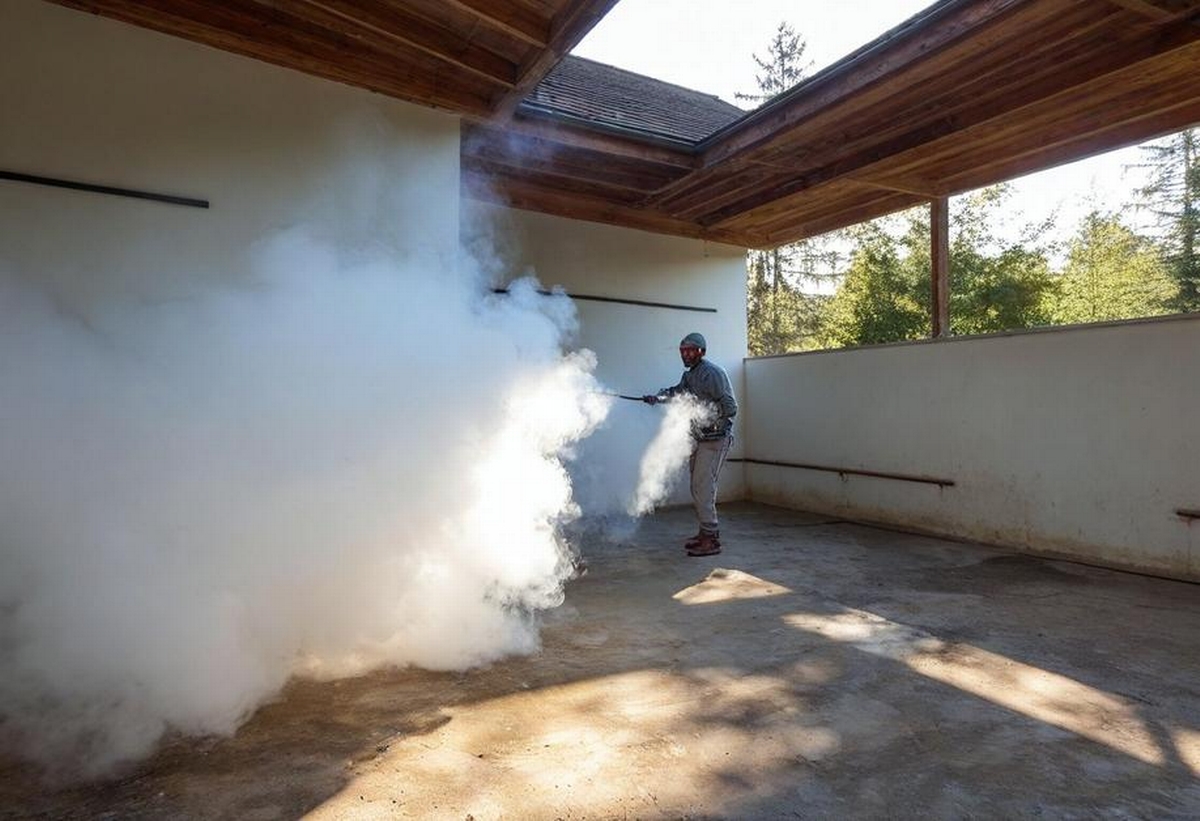Blog Post

Fire Damage Restoration Techniques: Traditional Methods vs. Innovative Solutions
In the blink of an eye, a fire can reduce a lifetime of possessions to ash, leaving behind scarred memories and daunting cleanup challenges. According to the National Fire Protection Association, structure fires resulted in over $14.8 billion in damages annually across the United States.
For a resident of Dover, DE, the repercussions of such disasters aren't just financial but emotional—a scenario that emphasizes the crucial role of efficient fire damage restoration companies in Dover. This article delves into the traditional vs. modern-day techniques for fire restoration, underscoring their importance in minimizing losses and facilitating quicker recovery.
For homeowners or businesses grappling with fire damage, understanding the nuances of restoration processes is paramount. The methods employed can spell the difference between a prolonged ordeal or a swiftly managed recovery. This post aims to illuminate both time-tested and cutting-edge restoration techniques, guiding property owners toward decisions that promise efficiency and efficacy.
As we explore these methods, we will underscore the benefits, challenges, and real-world applications. Whether facing the aftermath of a fire or simply looking to prepare, readers will glean insights into optimizing restoration efforts, employing both budget-friendly solutions and innovative options.
Traditional Fire Damage Restoration Techniques
Traditional methods may appear rudimentary compared to modern innovations, but they form the foundation of effective restoration work. Understanding these techniques offers a baseline against which newer technologies can be measured.
1. Structural Cleaning and Deodorization
Traditional restoration efforts primarily focus on cleaning and deodorization:
- Manual Cleaning: Using solvents and degreasers, professionals scrub smoke and soot residues from surfaces. This is labor-intensive but essential for removing ingrained residues from walls and hard surfaces.
- Thermal Fogging: A method to address lingering odors. It involves the application of deodorizing compounds through a fogger that permeates affected spaces, neutralizing smoke odors at a molecular level.
Challenges: While effective, these methods can be time-consuming and may require repeating. For example, thermal fogging might necessitate multiple applications to achieve desired results.
2. Soot and Smoke Damage Removal
- Sponge Cleaning: Using specially treated sponges to lift soot from walls and ceilings without spreading it further.
- High-Efficiency Particulate Air (HEPA) Vacuuming: For fine soot particle removal, ensuring impurities don’t resettle on cleaned surfaces.
You can further check out All Restored’s expert approach to fire damage restoration services in Dover.
Innovative Fire Damage Restoration Solutions
As restoration technologies evolve, they offer more efficient, cost-effective solutions that address the core challenges faced during fire restoration.
1. Air Scrubbing and Advanced Filtration
- Negative Air Systems: Create pressure differences that draw contaminated air into sealed-off spaces, which are then filtered and expelled clean, fresh air.
- Photo-catalytic Oxidation (PCO): Utilizes UV light to enhance the effectiveness of air scrubbing, breaking down volatile organic compounds and removing smoke odors.
Benefits: Faster and significantly more efficient, allowing for quicker inhabitability of the affected spaces.
2. Innovative Cleaning Techniques and Materials
- Dry Ice Blasting: A technique that removes fire and smoke residue without further damaging surfaces. It’s non-abrasive and eco-friendly, using CO2 pellets that evaporate on impact.
- Biodegradable Cleaning Agents: These modern cleaners are less harmful to the environment, preventing further ecological impact while effectively treating burned materials.
Challenges: Innovative techniques require expert handling and often come at a higher cost, making initial outlays more significant than older methods.
Comparing Traditional vs. Innovative Solutions
Benefits:
- Traditional: Often more cost-effective upfront; widely understood and accessible.
- Innovative: Quicker, more effective at addressing deep-rooted damage, potential for less secondary damage due to non-abrasiveness.
Challenges:
- Traditional: Time-consuming, requires repeat applications, higher risk of residual damage.
- Innovative: Requires specialized equipment and skilled labor, higher initial costs.
Choosing the Right Method
- Assessment of Damage: Often determines the appropriate method—severe damage may benefit from innovative approaches, while mild cases could utilize traditional techniques.
- Budget Considerations: Weighing immediate costs against long-term savings and restoration outcomes.
Restore Smarter After Fire Damage With All Restored
In the complex realm of fire damage restoration, knowing whether to leverage established methods or cutting-edge solutions can significantly influence recovery timelines and costs. For individuals and businesses in Camden, DE, understanding these techniques can be the key to restoring normalcy efficiently and effectively.
As you face—or prepare for—the challenges of fire restoration, consider reaching out to industry experts. Companies like All Restored can provide tailored solutions that blend traditional wisdom with modern efficiency, ensuring your property and peace of mind are well shielded.
Ready to safeguard your property against the unexpected? Contact All Restored for an expert consultation on fire damage restoration solutions tailored to your needs.